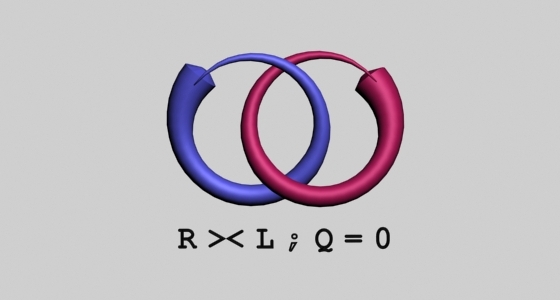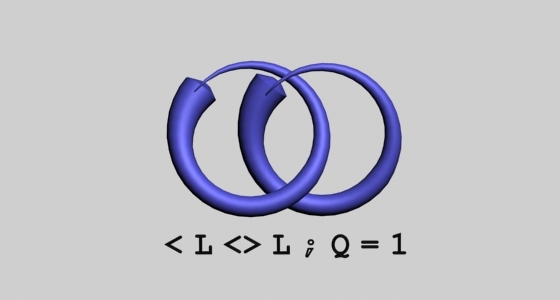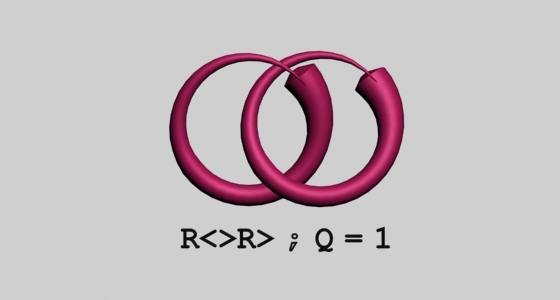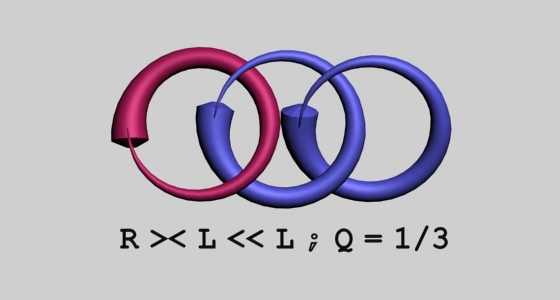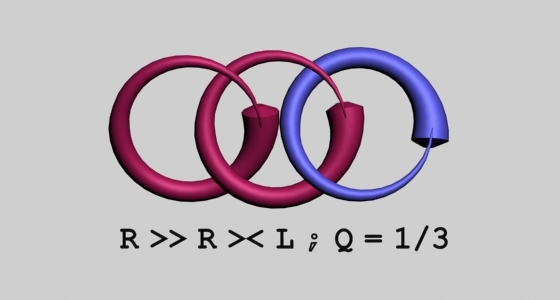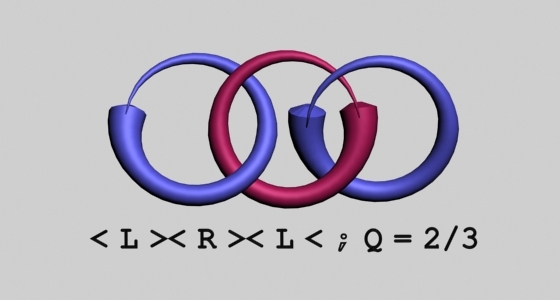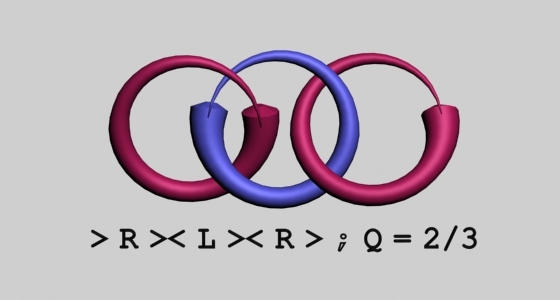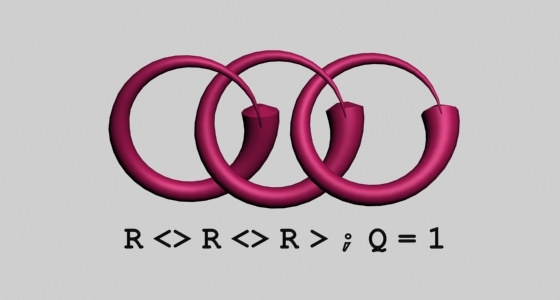| ElementsĀof quarks (TDE) |
|
|---|
|
|
Elements of quarks (the Quark elements) Any atom, in itself, is balanced on charges ¢ is neutral, though thus, the unbalance of masses in atom, between carriers of charges is observed. We shall take as an example atom of Bohr, it is possible to assume that, into a composition of a proton should enter: a positron and a particle (or group of particles), with a neutral charge. But it is known, that the structure of a proton is organized in more composite systems, such as ¢ quarks. This paper, trying to find connection, between long-lived particles a proton and an electron, with properties of quarks. Trying to describe structure of quarks, as well other particles. The proton concerns to a class of hadrons, and those will consist of quarks (fractional charges). Hadrons are divided into baryons and mesons where baryons are more inconvertible, than mesons as are derivated by three quarks as against the mesons consisting of two various quarks, and thus there are no mesons of pairs consisting of combinations u and d quarks. From all it follows, that stability (long) a proton indicates robustness stability of the union of quarks uud (+2/3e; +2/3e;-1/3e), and consequently in the given paper the attention will be stressed on quarks u and d and their unions (in particular uud) in the capacity of parent elements for the analysis.Also, the analysis of possible interrelation, between structure of quarks and structure of an electron.Further, it is offered some other approach, viewings of a structure of quarks (and other devices), supporting on already known data of properties of hadrons and leptons. Let even existence of quarks it has been predicted partly empirically as fractional charges, confirming their existence there were indirect observations, but it does not hinder in the further to hypothesize structures of fundamental particles, on the basis of fractional charges of particles, radiating from divisibility of charges of quarks.For obviousness, to expression of charges of quarks of a proton +2/3e; +2/3e;-1/3e, we shall add a view +1/3е+1/3е+1/3е+1/3е-1/3e (that naturally too determines its total charge +1е).And on the given expression it is visible, that the charge of a proton will consist in the total of five underload parts, each of which is equal 1/3 absolute a value of quantity of a charge of an electron. Here it would be desirable to underline, the equality of absolute values (potentials) of charges of an electron and a proton, but a proton has quarks where the aggregate, terrain clearance, quantity of charges of all quarks is identical to a charge of an electron, and its mass is less than proton, but thus there are no fractional component charges for an electron. Using the same method of decomposition, for a neutron, the quantity of thirds, will be equal to four:-1/3е-1/3е+1/3е+1/3e, this particle. But here, that is interesting, after prime cuttings, the charge for a neutron can be noted so:-2/3+2/3=0, and for a proton +1+0 = + 1. Here it is visible, that for a proton, its charge shapes three underload parts, and two others will be neutralized, and for a charge of a neutron it is not necessary to make cutting three on three, four parts have sufficed also. But it is possible for a neutron there are still pairs of parts with values of a charge-1/3+1/3.All this suggests that, stability of a particle depends from, parities or odds, quantities a quark of parts. Also it is necessary to pay attention that neutral particles are not stable as in a case with a neutron, as against carriers of charges, more inconvertible. These properties of particles indicate on following if the space would be symmetrical neutrons should be stable but it not so. The odd of space as a basis of stability allows particles to be inconvertible with a charge and just fractional charges of quarks indicate infringement, both C-symmetries, and P-symmetries as a whole. Probablly, quarks in a composition of protons are in a local resonance with space, in a particular degree are identical to it. Other formations any more in a state to resonate "to be inscribed" in space that gives in their decay. If, further to assume, that for divisibility of a charge of a quark the taken particle, and, not other properties of interactions of quarks, that responds separately, signifies, and the charge of an electron, should comprise of fractional parts which total will give in its total charge. By virtue of that that for quarks the underload fractional quantity of its charge makes 1/3 from the whole then it is possible to organize a total charge of an electron from three parts we shall tell:-1/3е-1/3e-1/3e. Though, the alternative with other quantity of parts is possible if to inlet parts, with the positive fractional charge. Let's draw a parallel between quantity of quarks - parts and masses of quarks u and d. Masses of the free quarks u - 0.0015-0.003 GeV, d - 0.003-0.007 GeV. If have divided a charge u a quark into two, for eduction of two parts of this quark, as separate parts of a quark with charges +1/3 then, masses of these parts should make half from mass u a quark. But it is visible, that u quarks it is easier d than quarks on the average in 2 times. That signifies, 1/2 part of mass u a quark is not equal to mass of the whole d a quark (+1/3е). Probablly (the writer did not improve) it is made with the purpose of approach of mass of a proton to a neutron mass. But in the given operation, at the initial stage it will not conduct, what or the analysis of masses or in the analysis will resort to masses of quarks. Above it was already supposed, that an electron it some kind of - the free quark, but with the whole charge. To tell more precisely - the electron will consist of group of the same devices which shape quarks. On the structure of an electron similar to a quark, indirectly indicate results of processes of an annihilation and various resonances. Supporting on formal logic, it is possible to draw a deduction, that one quark should comprise of odd quantity of devices which, on a series of rules, will determine divisibility of its charge. Neutral shapings should comprise of an even number of such devices. The total charge should be shaped of an odd number of devices, but for baryons the quantity of devices in a composition of quarks should be not less than five (at least, for d and u quarks). As to an electron that is possible, there will be enough three devices. We apply for these devices the term « a quark a element» (QE) - the underload device of a quark. It was already offered to inject into a quark components of quarks, with fractional charges. But per se QE the same charge, as an absolute value of a charge of an electron bear, put in combinations of polarities QE. Polarities of any charges indicate binarity, that is their symmetry. That indicates presence of various polarities QE. Devices should be similar on properties, but are excellent(different) on quality, namely - polarity. Further it is offered to mark out polarity not as mathematical signs "+" and "-" and as right (R) and left-hand (L) polarity, but it is possible to identify R polarity with it is familiar "+", and L polarity with it is familiar "-" electric charges. The substance of divisibility of a charge of a quark, consists of a combination sheaf Left-hand and Right in odd quantity, in a combination left-hand with right,Ā will give in neutral value of their blanket polarity. For example, sheaf QE as LRL will bear a fractional charge, and a sheaf LL and LR will bear, accordingly, the whole charge and neutral. That is, quantity of a charge single QE, is identical to a charge of an electron, but various on a sign which depends on polarity QE.
Structurization of quarks by elements of quarks.
When quarks to be in compositions of nucleons they have the strong connection among themselves. That for such property of quarks respond gluons, it suits the writer, for some reasons a little. And consequently it has been solved, that quarks (namely QE) in the answer for connection between them, primely speaking - mechanically connections between quarks. That signifies - QE have geometry. All those who are to some extent connected to nuclear physics, will regard above told (and the following is lower), as blasphemy in relation to the accepted model of a microcosm. But, the author hopes for understanding of that this work, other approach in consideration of properties of elementary particles. Further, if to speak about geometry QE it is necessary to be spotted, what shape have QE that they were in rather close couplings among themselves. In too time QE should not lose the geometrical properties to remain complete geometric pattern in a composition of quarks. Single figure which meets these requirements, is – a torus (ring). But by virtue of that that baryons can disintegrate, as well as various quarks the ring should have disrupture through which QE will be aimed to be disconnected, as well as on the contrary – to take up. Further, speaking about polarity it is possible to make an inferencing, that the torus with a disrupture should resemble a spiral than a ring more. Naturally and should be – QE a cylindrical spiral. As is known spirals have such property – polarization, a direction of coils on the relation of a long axis of a spiral. There are only two polarization states – right and left-hand. But, applying these properties of a spiral to QE, is of no use, if the spiral has no mechanical axial rotation. It should suggest, that, QE as a spiral, have polarized gyration in a plane of a perpendicular long axis of a spiral. But, QE can have and other degrees of freedom if it to be in a free state. It is necessary to agree in one – the sizes of a spiral. Here main that the diameter of a spiral was more extents of its coils (if them more one) with an appreciable odds. It, at least, is necessary as a matter of convenience, the further diagrammatical drawing up from QE fundamental particles. Shapings from QE will remind a customary sheaf known as – a chain, where everyone QE the chain link.
So, we shall make of various combinations QE fundamental particles. But,
before, we shall inject a series of rules which in the further we
shall try to prove supporting on known properties of particles and a kinematics of interactions QE.
At the analysis there is no necessity to indicate a polarity mark of a particle, but only its
fractional or a complexor from the total of all QE (polarity of one QE is equal 1) taking place in a sheaf.
In the further all rules (a combination of sheafs QE) will be applied for QE which planes of gyration,
will lie in medial (approaches) of a plane of gyration of all QE in sheafs.
And in cases with fields, the perpendicular of such blanket plane will coincide a vector of an external field.
I. Rules for a case of a sheaf of pair QE when they are in the free a state, in the field of space without what or fields.
1. A view of record: R><L
and L><R; Q=0.
When one pair QE will consist of two different polarities
QE their charge should be neutral, and they are stable.
Figures of signs of an inequality ">" and "<" inside expression, designate a
vector of interactions between QE and their direction is similar about polarity parent QE.
But in some cases for a sheaf from LR expression will look like as in the
given instance ½L><R╗, instead of ½L<>R╗, it is stipulated by identity,
symmetry of record ½R><L╗ and ½L><R╗. Opposite directions indicate inconvertible connection between two
QE in a sheaf. But there is a recording capability of a view: QE<>QE such alternatives will be circumscribed on a course.
II. Rules for a sheaf of pair QE which are in a magnetic field: 1. A view of record: >R<>L< и >L<>R<; Q=0. Pairs aim to hold connection, opposing an external field (though the sheaf will be inconvertible, inside record figures « <> » indicate counteraction to vectors «>ģ<» an exterior dipole). 2. A view of record: ><L<>L< и >R<>R><; Q=1. Such pairs, from unipolar QE, will be stable also their charges equal 1. It is visible, that to aspiration to decay QE, the external field will hinder with this, that will be less expressed in cases, when such pair in the free space (rule I, point 2). III. Rules for a case of pair QE when they to be in electrical or a gravitational field. 1. A view of record: >R><L> and <R><L<; Q=0. Data of a sheaf though will be stable and neutral, but it is visible, that such a sheaf are subject to an external action of fields. The notation «>…>» or «<…<» indicates on a vector of an external field in the given rule.
2. A view of record:><L<>L> and <R<>R><; Q=1.
Such sheaf QE will be feeblly inconvertible. The external field of
opposite polarity is visible, that, concerning polarity QE in a sheaf, will be aimed to hold connection
on the one hand, but the disrupture is inevitable, as in cases with rule I point 2. The
charge of this sheaf is equal 1.
Summarizing rules with I on III it would be desirable to point quantities of charges of
a sheafs as it is visible that charges in these rules can bear fractional values namely
1/2 or 3/2 but by virtue of that that such charges was not watched, accordingly
quantities of their charges should be the whole values.
IV. Combinations from three QE in a state without fields.
2. A view of record: <L><R><L< и >R><L><R>; Q=2/3. Syntax in the given record is similar to a view in rule I point 1 but with distinction that such a sheaf organize the field. Here, QE taking place at centre, is the initiator of a field opposite to it. A sheafs are stable.
3. A view of record: R<>R<>R> и <L<>L<>L; Q=1. Are not stable.
V. Combinations from three QE in a magnetic field.
VI. Combinations from three
QE in electrical or a gravitational field.
Summarizing these six rules it is visible, that for brevity records it is necessary to
inject parameter which should designate quality of a sheafs as –
stability. The figure for this parameter offers the latin character "X".
Record for the given parameter will look as an inequality to null. That
is if for a sheaf explicit aspiration to decay we shall note X <0 if a
stability feeble or not particular that X <> 0 if the sheaf it is stable that X> 0 (stability
of a proton, an electron and others long-lived). As for improvement in brackets we
shall illustrate, this alternative to concern to what situation (without fields - 0, magnetic -
D, gravitational or an electric field – gq) we Shall note repeatedly combinations, without
explanations having marked out them as – variants of structures. I. 1. R><L and L><R Q=0; X>0. (0) 2. <L<>L and R<>R> Q=1; X<0. (0)
II. 1. >R<>L< and >L<>R< Q=0; X>0. (D) 2. ><L<>L< and >R<>R>< Q=1; X>0. (D)
III. 1. >R><L> and <R><L< Q=0; X>0*. (gq) 2. ><L<>L> and <R<>R>< Q=1; X<0. (gq) 3. <<L<>L< and >R<>R>> Q=1; X<0. (gq)
IV. 1. R><L<<L< and >R>>R><L Q=1/3; X>0. (0) RLL=LLR; RRL=LRR. 2. <L><R><L< and >R><L><R> Q=2/3; X>0. (0) 3. R<>R<>R> and <L<>L<>L Q=1; X<0. (0)
V. 1. >R><L<<L<< and >>R>>R><L< Q=1/3; X>0. (D) 2.><L><R><L<< and >>R><L><R>< Q=2/3; X>0. (D) 3. >R<>R<>R>< and ><L<>L<>L< Q=1; X<>0. (D)
VI. 1. >R><L<>L<> and <>R<>R><L< Q=1/3; X<>0. (gq) 2. <R><L<>L<< and >>R<>R><L> Q=1/3; X>0. (gq) 3.<<L><R><L<< and >>R><L><R>> Q=2/3; X>0. (gq) 4.<>R><L><R>< and ><L><R><L<> Q=2/3; X>0. (gq) 5. >R<>R<>R>> and <<L<>L<>L< Q=1; X<0. (gq)
6. <R<>R<>R><
and ><L<>L<>L>
Q=1;
X<>0. (gq)
L><R><L< v R><L<<L< ^ L><R><L<
But, as is known, the electron though is attracted to a proton, but at a usual terms between them there are no strong couplings. Obviously, these two fundamental particles, something should relate, but in too time to retain apart. And for our case it is offered to inject between them a pair sheaf it permissible LR. Then the structure will become:
Here the attention that is possible draws,
the quantity of the intermediate of a sheafs indicates energy (orbital) levels of an electron in atom. Dmitry Poyedinok |
||
|---|---|---|---|
|
|
|
|
|---|

